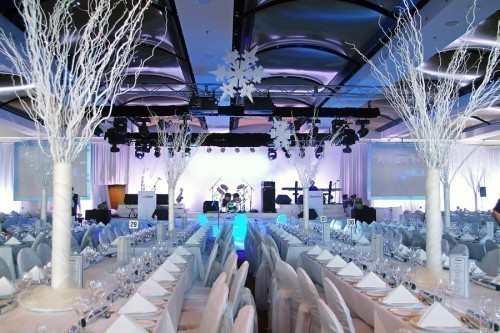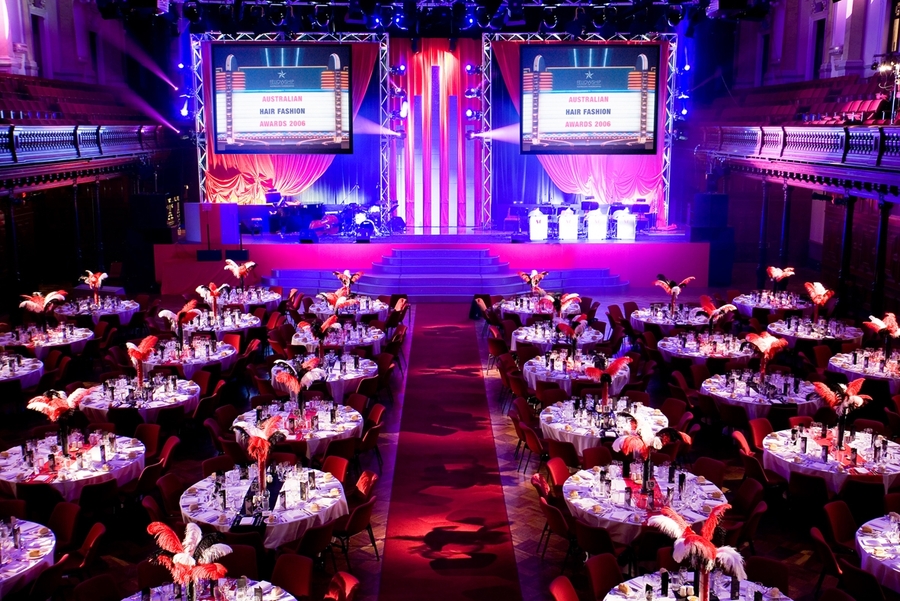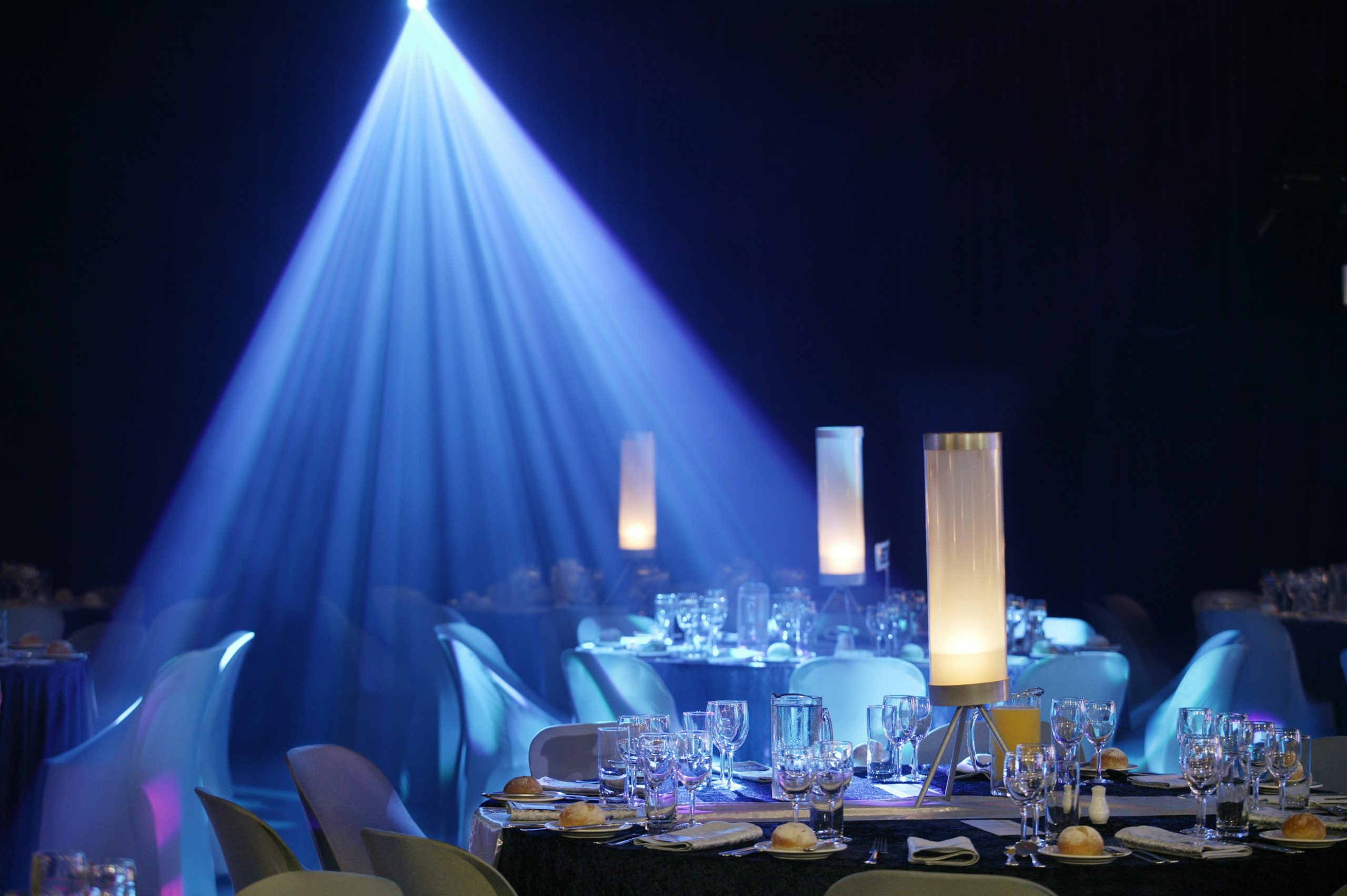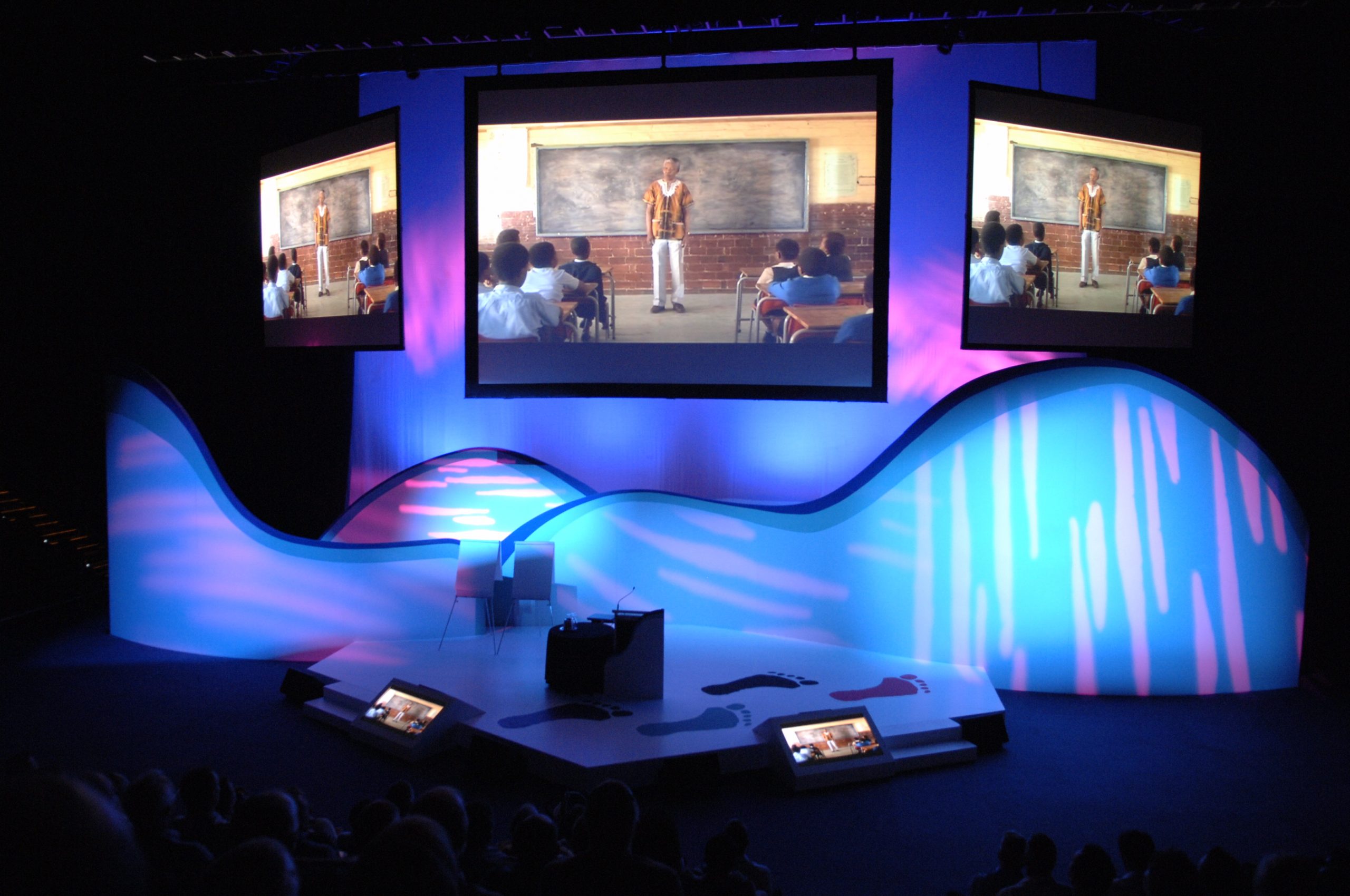Do you think about communication when looking for an event space?
There is a lot that goes into choosing a venue suitable for any style of event. Considerations such as brand, location, price, food & beverage are all very important. However the question around “can the venue aid and support the communication process” is rarely investigated.
For any style of event, the communication factor is critical. An event organiser invites an audience to promote a product, to educate, or to simply entertain. What ever the reason is for the event, they want to communicate a message to an audience. This message is commonly delivered through production elements such as sound, vision and lighting equipment that must work in conjunction with the function space. Here I will take you through the ten elements you need to consider on your next site visit to your potential event space!

1. Foyer & Pre Function Space
This is the first impression that your audience gets of an event. It’s a space where you have the opportunity to build anticipation and set a great foundation for your message to be communicated. You want your audience to be immediately engaged, as soon as the first presentation begins. The first important messages that set the tone of the event will be lost, if your audience is not engaged!
2. Room Capacity
The capacity of a function space can make or break your event. You want to find that balance between not too big and not too small. Attendees could think attendance was poor if they found themselves in a large cavernous space. While on the other hand, in a tight squashy room, it may convey that the client does not care and is skimping on budget. Both extremes have the audience thinking negative thoughts, even before the first speaker gets up to the podium!
3. Room Shape & Orientation
The shape of a room can greatly impact the overall production requirements for an event. For long or wide rooms, sound and vision reinforcement is required to ensure that the communication broadcasted from stage reaches the entire audience. You do not want people seated to the side or rear of the function space feeling disconnected from the communication experience around the central stage area.
4. Ceiling Height
The ceiling height of a function space can greatly impact production elements such as the height of projection screens and stage. A raised stage or podium is a great way to elevate a presenter and provide a central focus for the audience, overall enhancing the communication. Projection screens are used to visually reinforce the spoken word, and play an integral role in the communication process. You want your entire audience to be able to clearly see the presenter as well as the projection screens, ensuring there is no barrier in the communication being directed to your audience.
5. Rigging Facilities
Rigging facilities in a function space, open up the possibilities of positioning production elements such as projectors, speakers and lights in the ceiling. This brings a clean and professional look to the function space. By recessing the production elements from rigging in the ceiling, ensure the productions elements do not draw your audience’s attention away from what is being communicated on stage. Further to this, there are the possibilities for providing a wider range of seating styles or increased capacity due to the floor space not being cluttered with production equipment.
6. Power Facilities
Sound, Vision and Lighting equipment all require electricity! The power facilities of function spaces will dictate the amount of production equipment that can be used. Most dedicated event spaces feature 3phase power. This is usually more than enough to run an event. However venues such as restaurants and office spaces usually have limited power outlets, which will restrict any plans for extensive technology to be used for communication.
7. Access Times
Venues like to utilise their function space as much as possible. It’s not uncommon for a room to be booked for breakfast, lunch and dinner events, all on the same day. Access times before and after an event will dictate what production elements can be utilised as it can take considerable time to set up and pack down. You do not want to risk being too ambitious and run out of time on the set up, leading to the event starting late. This will start the audience looking at their watches and drawing conclusions as to what is causing the delay. Not a professional way to kick start the communication for an event!
8. Loading Dock
The loading dock is not the most glamorous area of a venue, however this is the point where the production elements start the journey on their way through to the function space. The ease of access through the loading dock, will determine what and how many production elements can be utilised in the communication process of an event.
9. Rehearsals
Booking a dedicated time in the function space for your presenters to practice and rehearse their presentation is crucial to their communication style and overall confidence. Further to this, it’s also a chance to build rapport with the Technicians who are pressing buttons on production equipment at critical points in the presentation. The Presenter and Technician need to work together as a team, to ensure communication is unhindered. A presenter only gets one chance at a first impression with a live audience!
10. In House AV
Most venues have a dedicated in-house event staging and audio visual team. Being in house brings venue knowledge of what works and what doesn’t work for specific spaces and event types. This knowledge is invaluable to draw upon when using that venue for your event. Typically, you will find expertise and efficiencies the in-house teams can exploit for you, through the use of dedicated onsite staff and pre-installed equipment. These In-house teams have strong relationships and well established lines of communication within the venue itself. The communication backstage is just as critical as the communication front of house!
Keeping these ten elements in mind on your next site inspection will guide you in the right direction to choosing a suitable venue for your audience and message!



Image Credits: Unless stated otherwise, all sourced images are owned by us




Comments